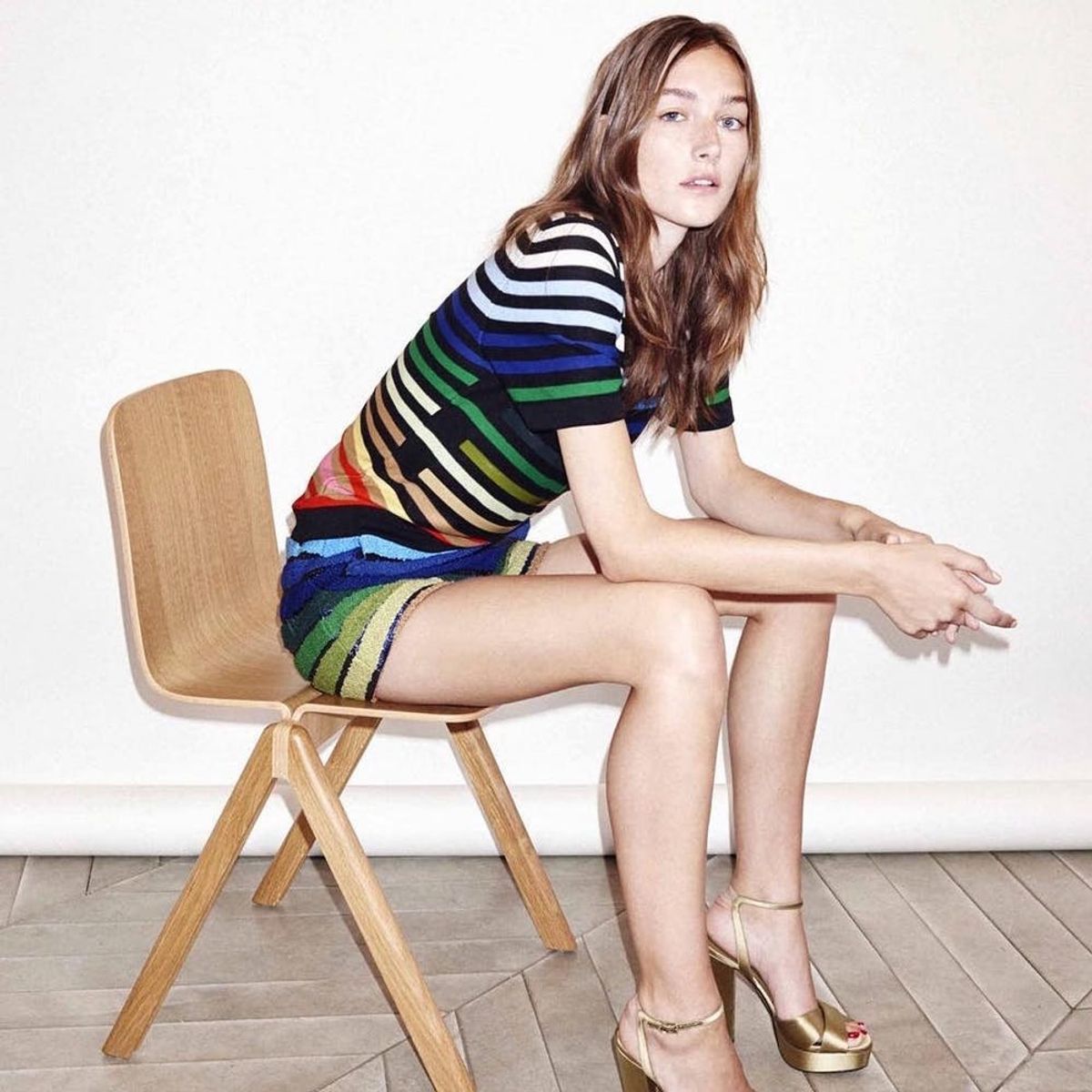4 Things Sonia Rykiel Taught Us About Style

During a time in which fashion is undergoing such significant change, the loss of one the industry’s most free-spirited, forward-thinking designers comes as a particularly hard hit. Sonia Rykiel, French icon and créatrice de mode passed away Thursday morning at the age of 86 after years of battling Parkinson’s disease. The rebellious “queen of knitwear” (who ironically did not know how to knit) was a true fashion visionary, helping revolutionize the way women dress with her ready-to-wear collections that resonated with girls on the go the world over. Her optimistic, modern and free-thinking approach to fashion captured generations, and will most certainly be missed.
Born in the Parisian suburb, Neuilly, to Russian and Romanian parents in 1930, Rykiel never aspired to become a designer, rather, her path revealed itself in a totally unexpected and organic way. Her first foray into fashion came not long after her marriage to boutique owner, Sam Rykiel, when she started making her own maternity clothes in response to the lack of appealing options on the market. Her husband began selling her clothes in his shop, and they quickly gained popularity. A striped pullover sweater known as the “poor boy” emerged as her signature, and eventually became the very piece that would launch her into a life-long sartorial career. The style was picked up by Elle magazine and was soon seen on some of the most popular celebrities of the time, including Françoise Hardy, Catherine Deneuve, Audrey Hepburn and Brigitte Bardot.
While knitwear definitely wasn’t new at the time, it was Rykiel’s unique approach and modern eye that made it a mainstay in every woman’s closet. Vibrant stripes, flattering, figure-hugging shapes and unlined designs struck the ultimate balance of form and function.
4 Things Sonia Rykiel Taught Us About Style
1. Always question the status quo. Sonia Rykiel wasn’t one to settle, and her effortlessly elegant designs inspired generations of women to part ways with tradition and what was perceived as “appropriate” in favor of designs that reflected their own lifestyles and aesthetics. She was also a strong proponent of empowering women to embrace their own figure, creating designs that came to life on the body while encouraging women to forgo undergarments.
2. Form and function are fundamental. Forget the rest. Rykiel was frequently likened to Chanel in her unwavering belief that fashion and comfort can and should go hand in hand. A focus on reimagined knitwear was her way of tackling this issue head on. Many of her garments were designed to be effortlessly mixed and matched, allowing women to amass an arsenal of essential pieces that could be worn in a variety of ways. With more and more women taking on the title of boss, the ease and elegance of Rykiel’s designs were needed more than ever. (Corsets? No thanks.)
3. Fashion is a form of empowerment. Rykiel knew that true style evolved out of a sense of undeniable confidence, something which required threads that women felt good about wearing. The revival of French feminism in the late ‘60s provided the perfect environment for the designer to experiment. Style was taking on a more casual aesthetic, which led Rykiel’s unpretentious garments to be met with overwhelming fanfare. She strove to liberate women through design, creating pieces without lining, choosing fabrics and forms that highlighted the figure and provocatively promoting the abandonment of oppressive underthings. Today, Rykiel’s label still embodies that free-spirited, feminine aesthetic that manages to be both timeless and cutting edge.
4. Stay true to you. Rykiel’s designs have that forever kind of feel, but blasé they simply are not. From the beginning, the designer embraced both bold color, patterns and funky embellishments that infused even the most classic cuts with youthful energy. Rykiel was constantly bringing in elements that spoke to the mood and air of the time, but always managed to stay true to the nature of her label — keeping the principles of comfort, style and freedom of expression at the forefront of the design process.
What will you remember most about Sonia? Tweet us over @BritandCo!
(Photos via Pascal Le Segretain/Getty)


















